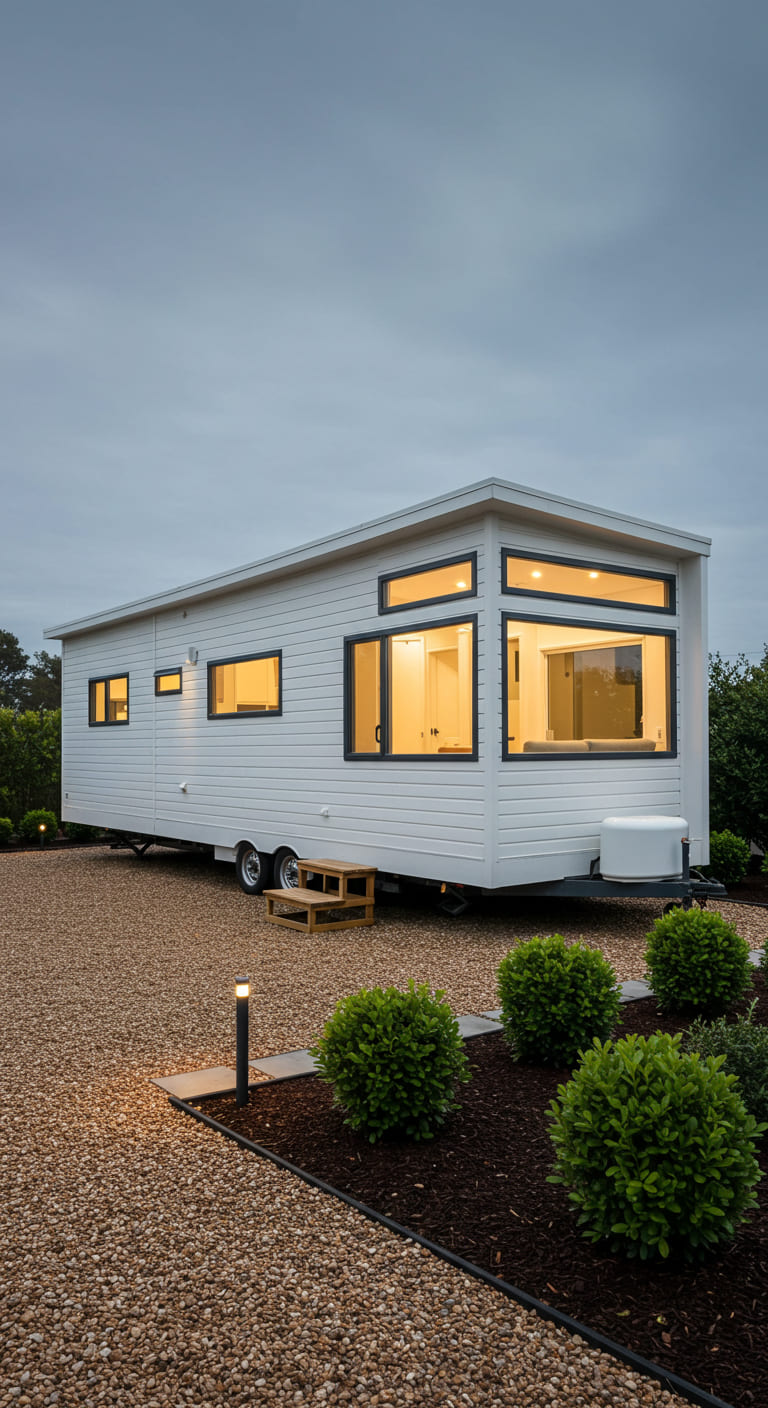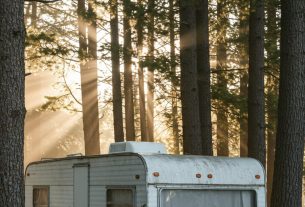As I embarked on my journey to find the perfect living space, I found myself faced with a fascinating dilemma: should I opt for a tiny house or a mobile home? Both options seemed appealing, but they also presented unique characteristics that could significantly impact my lifestyle. In this article, I want to share my insights and experiences as I explored the differences between tiny houses and mobile homes. Whether you’re considering a minimalist lifestyle or need a flexible living arrangement, understanding these two options will help you find your perfect living space.
Understanding Tiny Houses
Tiny houses have surged in popularity over the past decade, primarily due to their minimalist design and environmental benefits. These compact homes typically range from 100 to 400 square feet and are often built on trailers for mobility. While I initially thought of tiny houses as simply smaller versions of traditional homes, I soon realized there is much more to them.
Key Features of Tiny Houses
- Minimalist Living: Tiny houses promote a lifestyle focused on simplicity and intentionality. I discovered that living in a smaller space encourages me to prioritize what truly matters.
- Eco-Friendly Design: Many tiny homes are built using sustainable materials and energy-efficient appliances, which appealed to my desire for a lower carbon footprint.
- Customizable Layouts: Tiny houses often come with unique floor plans and designs, allowing for personal expression. I was captivated by the creative uses of space in these homes.
- Community Living: Tiny house communities are becoming popular, fostering a sense of belonging and support among residents.
Pros and Cons of Tiny Houses
As I delved deeper into the world of tiny houses, I began to weigh their advantages and disadvantages.
- Pros:
- Lower costs: Tiny houses are generally more affordable, reducing financial burdens.
- Less maintenance: With fewer square feet to care for, upkeep becomes much simpler.
- Freedom and flexibility: The ability to move my tiny house anywhere opens up opportunities for travel and exploration.
- Cons:
- Limited space: For some, the small footprint can feel confining, especially for families or those with lots of possessions.
- Zoning challenges: Depending on the location, tiny houses may face legal restrictions or zoning issues.
- Financing hurdles: Securing loans for tiny homes can be more complicated than traditional mortgages.
Exploring Mobile Homes
Mobile homes, often referred to as manufactured homes, have been around for decades. Unlike tiny houses, mobile homes typically offer more square footage, ranging from 400 to 2,500 square feet. Understanding the characteristics of mobile homes helped me appreciate their place in the housing market.
Key Features of Mobile Homes
- Affordability: Mobile homes are generally more budget-friendly than traditional homes, making them an attractive option for many.
- Variety of Sizes: With various sizes and layouts available, mobile homes can accommodate families of all sizes.
- Permanent Foundations: Many mobile homes are placed on permanent foundations, providing stability and a more traditional feel.
- Community Living: Like tiny houses, mobile homes often exist within communities, fostering a unique sense of camaraderie.
Pros and Cons of Mobile Homes
While exploring mobile homes, I noted their benefits and drawbacks, which are crucial for anyone considering this option.
- Pros:
- More living space: Mobile homes provide a greater square footage, suitable for families or those who require more room.
- Ease of financing: Mobile homes often have more financing options available, making them easier to purchase.
- Established neighborhoods: Many mobile homes are located in established communities with amenities and services.
- Cons:
- Depreciation: Unlike traditional homes, mobile homes can depreciate in value, making them less of an investment.
- Limited customization: While there are various models available, customization options may be more limited compared to tiny houses.
- Potential zoning issues: Similar to tiny houses, mobile homes may encounter zoning regulations that restrict where they can be placed.
Comparing Tiny Houses and Mobile Homes
With a clearer understanding of both tiny houses and mobile homes, I began to compare them directly. This side-by-side analysis helped me pinpoint the option that best suited my lifestyle and preferences.
Cost
Cost is often a significant factor when choosing between a tiny house and a mobile home. I found that:
- Tiny houses: Typically range from $20,000 to $100,000, depending on design and materials.
- Mobile homes: Generally range from $50,000 to $150,000 or more, depending on size and features.
Space and Layout
When it comes to space, I noted key differences:
- Tiny houses: Usually offer around 100 to 400 square feet, ideal for minimalists.
- Mobile homes: Provide more living space, typically between 400 to 2,500 square feet, suitable for families or those needing extra room.
Mobility
Mobility is another critical factor:
- Tiny houses: Built on trailers, making them easily transportable.
- Mobile homes: Designed for mobility but often remain in one location once set up.
Community and Lifestyle
Lastly, the community aspect impacted my decision:
- Tiny houses: Often found in intentional communities that focus on sustainability and shared values.
- Mobile homes: Typically situated in established neighborhoods with amenities and services.
Real-Life Examples
To further illustrate the differences, I want to share a couple of real-life examples that showcase the experiences of tiny house and mobile home owners.
Case Study: The Tiny House Movement
Meet Sarah, a 28-year-old architect who embraced the tiny house movement. After downsizing from a 2,000-square-foot home, she designed a 200-square-foot tiny house on wheels. Sarah found immense joy in her minimalist lifestyle, enjoying the freedom to travel and the sense of community among fellow tiny house owners. Her experiences highlight how tiny houses can foster a more intentional way of living.
Case Study: The Mobile Home Community
On the other hand, consider John and Lisa, a couple with two children living in a mobile home park. They purchased a 1,500-square-foot mobile home, allowing them to enjoy more space while maintaining affordability. The family appreciates the amenities offered in their community, including playgrounds and social events. Their story demonstrates how mobile homes can provide a comfortable and supportive environment for families.
Making the Right Choice for You
As I concluded my exploration between tiny houses and mobile homes, I realized that the perfect living space ultimately depends on individual needs and lifestyle preferences. Here are some questions to consider as you embark on your journey:
- What is your budget, and how much are you willing to spend on your living space?
- How much space do you need for comfortable living?
- Are you seeking mobility, or do you prefer a more permanent living situation?
- What kind of community do you envision living in?
By reflecting on these questions, you can better identify which option aligns with your goals and lifestyle.
Conclusion
Choosing between a tiny house and a mobile home can be a daunting task, but understanding the key differences can help simplify the decision-making process. Tiny houses offer a minimalist lifestyle with a focus on sustainability, while mobile homes provide more space and community amenities. Ultimately, the best choice depends on your personal preferences, budget, and lifestyle needs.
I encourage you to explore both options further and take the time to visit tiny house communities and mobile home parks in your area. By immersing yourself in these environments, you can gain valuable insights and make an informed decision.
FAQ
What is the average cost of a tiny house?
The average cost of a tiny house typically ranges from $20,000 to $100,000, depending on design and materials.
How mobile homes differ from tiny houses?
Mobile homes tend to be larger (400 to 2,500 square feet), often placed on permanent foundations, and have more financing options, while tiny houses are smaller (100 to 400 square feet) and usually built on trailers for mobility.
Can I finance a tiny house?
Yes, financing options for tiny houses are available, but they may vary from traditional mortgages. Some lenders may offer personal loans or specialized tiny home loans.
Are tiny houses legal in all areas?
No, zoning regulations for tiny houses can vary significantly by location. It’s advisable to check local laws and regulations before purchasing or building a tiny house.
If you found this article helpful, please consider signing up for our newsletter for more valuable insights on living spaces and lifestyle choices. Don’t forget to share this article with friends and on social media!
DNA MOTORING TOOLS-00234 Low Profile Hydraulic Trolley Service/Floor Jack, 2 Ton (4000 lbs) Capacity, Lifting Range 5.1"-13", Black
$55.99 (as of November 16, 2025 07:53 GMT -03:00 - More infoProduct prices and availability are accurate as of the date/time indicated and are subject to change. Any price and availability information displayed on [relevant Amazon Site(s), as applicable] at the time of purchase will apply to the purchase of this product.)
Sign up for our newsletter and stay up to date with exclusive news
that can transform your routine!





